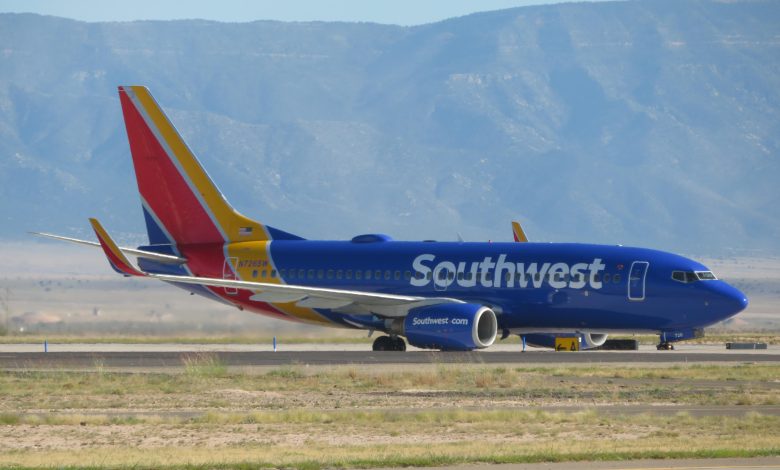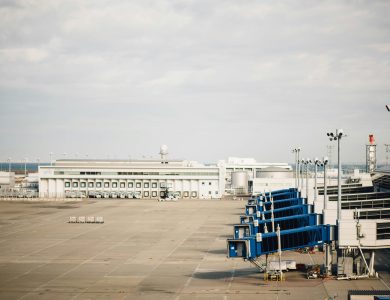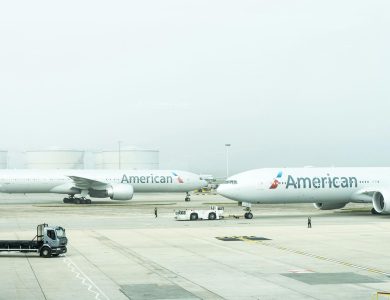
In the ever-evolving world of air travel, the allure of airline miles programs has long been a siren call for frequent flyers, promising exotic getaways and exclusive perks in exchange for brand loyalty. Yet, as the aviation landscape shifts beneath our feet, a new player has taken to the skies, challenging the established order: low-cost carriers. With their no-frills, budget-friendly approach, these airlines have captured the hearts—and wallets—of millions, leaving traditional carriers scrambling to compete. As travelers flock to these economical alternatives, one must ponder: are these low-cost carriers signaling the demise of the once-cherished airline miles programs? Join us as we explore this intriguing juxtaposition, delving into the dynamics reshaping the skies and what it means for the future of air travel rewards.
Rise of Budget Airlines and the Changing Landscape of Loyalty Programs
The proliferation of budget airlines has undeniably reshaped the travel industry, ushering in a new era where affordability often trumps traditional perks. With their no-frills approach, low-cost carriers have forced legacy airlines to rethink their strategies, particularly their loyalty programs. As more travelers prioritize cost savings over accumulating miles, the once-coveted airline miles programs face a formidable challenge. Loyalty is being redefined—no longer is it just about miles, but about value and flexibility. To stay relevant, many airlines are pivoting towards dynamic reward systems, offering more personalized experiences and partnerships that extend beyond flights.
With this shift, frequent flyers are witnessing a transformation in how they earn and redeem rewards. Key trends include:
- Flexible Redemption Options: Airlines are introducing more ways to use miles, such as for hotel stays, car rentals, and exclusive events.
- Tiered Benefits: Loyalty programs are incorporating multiple tiers, providing tailored benefits to different traveler profiles.
- Strategic Partnerships: Collaborations with non-airline entities, like credit card companies and retail brands, are expanding the utility of airline miles.
This evolving landscape suggests that while budget airlines might pose a threat to traditional miles programs, they also drive innovation, compelling airlines to create more holistic and customer-centric loyalty experiences.

Challenges Faced by Traditional Airlines in Retaining Frequent Flyers
- Price Sensitivity: With the rise of low-cost carriers, travelers are increasingly focused on ticket prices rather than loyalty rewards. This shift in consumer behavior means traditional airlines struggle to justify the higher costs of their services solely based on loyalty programs.
- Diverse Travel Preferences: Frequent flyers are no longer just business travelers. The demographic has broadened to include leisure travelers, digital nomads, and remote workers, all of whom seek value and flexibility. Traditional airlines often find it challenging to adapt their offerings to meet the varied preferences of these new-age travelers.
- Complexity of Loyalty Programs: Many airline miles programs are criticized for their complexity, with customers often finding it difficult to understand how to earn and redeem points. This complexity can deter frequent flyers from engaging fully with the programs, especially when low-cost carriers offer straightforward pricing and no-frills services.
- Technological Lag: Low-cost carriers often leverage cutting-edge technology to streamline operations and enhance customer experiences, while some traditional airlines lag behind in digital transformation. This technological disparity can make it difficult for traditional airlines to maintain a competitive edge in customer retention.

Innovative Strategies for Adapting Loyalty Programs in a Cost-Driven Market
In a fiercely competitive, cost-driven market, airlines must reimagine loyalty programs to remain attractive to budget-conscious travelers. Low-cost carriers (LCCs), with their no-frills approach, challenge traditional airlines to rethink how they reward customer loyalty without inflating operational costs. Here are some innovative strategies:
- Flexible Redemption Options: Allow passengers to redeem miles for a broader range of services, such as extra baggage, seat upgrades, or in-flight meals, instead of just free flights.
- Tiered Loyalty Tiers: Introduce more accessible entry-level tiers that reward occasional flyers, encouraging repeat business without significant upfront commitments.
- Partnership Ecosystems: Collaborate with non-airline partners like hotels, car rentals, and retail stores to offer a diverse array of redemption opportunities that enhance perceived value.
By adopting these strategies, airlines can tailor their loyalty programs to align with the expectations of price-sensitive travelers while maintaining the allure of earning and redeeming miles.

Balancing Affordability and Customer Loyalty in Modern Air Travel
In the evolving landscape of air travel, the rise of low-cost carriers (LCCs) has sparked a heated debate about the future of traditional airline miles programs. While these budget airlines have made flying more accessible to the masses by offering competitive pricing and no-frills services, they have also challenged the loyalty structures of established airlines. Travelers today are faced with a choice: opt for the wallet-friendly fares of LCCs or stick with the perks and long-term benefits offered by legacy carriers.
On one hand, low-cost carriers prioritize immediate affordability, often at the expense of the traditional perks associated with frequent flyer programs. However, many passengers value the flexibility and simplicity that LCCs provide. On the other hand, established airlines continue to invest in their loyalty schemes, offering benefits such as:
- Priority boarding
- Access to exclusive lounges
- Free checked bags
- Upgrades to premium seating
The challenge for airlines is to find a balance that caters to the cost-conscious traveler while also rewarding loyal customers who seek more than just a seat on a plane. As the industry adapts, the question remains whether these loyalty programs can evolve to coexist with the budget-driven model of LCCs, or if they will become relics of a bygone era.



